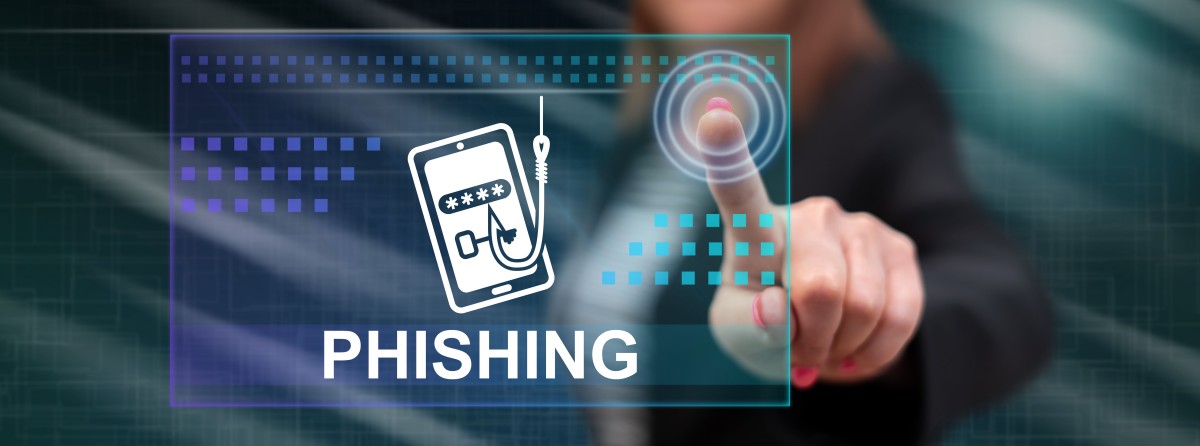Using Patient Education Videos to Support Preventive Care Strategies
As a healthcare provider, you know prevention saves lives. From routine screenings and lifestyle counseling to vaccinations and early detection,...
5 min read
Robert McDermott Oct 24, 2024 12:32:00 PM
 Technology is great when it performs as intended, but what about when it doesn’t deliver? Or worse, what happens when it leaves us exposed to security risks and becomes a liability? In healthcare, we’ve largely embraced the digital transformation which means we have an increased risk of cyber threats, particularly social engineering attacks.
Technology is great when it performs as intended, but what about when it doesn’t deliver? Or worse, what happens when it leaves us exposed to security risks and becomes a liability? In healthcare, we’ve largely embraced the digital transformation which means we have an increased risk of cyber threats, particularly social engineering attacks.
Unlike traditional hacking methods that target system vulnerabilities, social engineering preys on the human element, tricking healthcare staff into unknowingly opening the door to cybercriminals. From phishing emails to fraudulent phone calls, these attacks can have devastating consequences, compromising patient data and disrupting critical services. Understanding how social engineering is used in healthcare cyber attacks is the first step toward building stronger defenses.
Quick Links:
Social engineering is a deceptive tactic used by cybercriminals to manipulate individuals into sharing confidential information or performing actions that may compromise network security. Instead of targeting systems directly, social engineering exploits human psychology, often through impersonation, phishing emails, or fraudulent communications.
When it comes to healthcare, these attacks may trick employees into sharing sensitive data, such as patient records or login credentials, leading to breaches that can disrupt operations and violate HIPAA regulations. Understanding these tactics is crucial for healthcare practices to safeguard healthcare networks and systems from potential threats.
 Why is Social Engineering a Vulnerability for Healthcare Cyber Attacks?
Why is Social Engineering a Vulnerability for Healthcare Cyber Attacks?Social engineering presents a significant vulnerability in healthcare because it targets the human element in the equation. Your staff, who are a critical component of healthcare services, are also often the weakest link in cybersecurity.
Healthcare workers are frequently more focused on patient care and operational efficiency than cybersecurity awareness, which can make them prime targets for cybercriminals who exploit both urgency and trust. Whether through phishing emails disguised as urgent patient updates, phone calls impersonating IT support, or malicious links posing as healthcare resources, attackers can easily manipulate employees into revealing sensitive information or providing access to critical systems. These breaches can lead to data theft, ransomware attacks, and violations of patient privacy.
The healthcare sector also handles vast amounts of sensitive patient data, which makes it particularly attractive to cybercriminals. Social engineering attacks that successfully gain access to EHRs or financial information can result in severe consequences, not just to practices and healthcare organizations but also to patients. In addition to the legal and financial consequences, including hefty fines for HIPAA violations, healthcare organizations may be incapable of accessing files, providing care, dispensing prescriptions or medication, and processing payments for care.
Since healthcare staff often have access to multiple systems, one successful attack can lead to widespread infiltration of an organization's entire network.
Additionally, the complex workflows and reliance on third-party vendors within healthcare systems create multiple entry points for social engineering attacks. Vendors, clinicians, and administrative staff are all interconnected through cloud-based systems and applications, making it easy for an attacker to impersonate trusted parties and exploit the healthcare ecosystem’s vulnerabilities. Effective training and layered security protocols are critical in mitigating this threat.
Social engineering attacks in healthcare come in various forms, each designed to exploit human behavior and gain unauthorized access to sensitive information. These attacks can target healthcare employees, administrators, or even patients, leading to breaches that compromise data security and patient privacy. Here are the most common types of social engineering attacks in healthcare:
Attackers send emails that appear to be from a trusted source, tricking recipients into clicking malicious links or providing sensitive information like login credentials or patient data.
A more targeted form of phishing, spear phishing focuses on specific individuals, such as healthcare administrators or doctors, often using personalized information to make the attack more convincing.
Cybercriminals call healthcare employees pretending to be from IT support or other departments, persuading them to share passwords or grant system access under the guise of fixing an issue.
Similar to phishing but executed via text messages, attackers send urgent messages prompting recipients to click on links or download malicious attachments.
An attacker creates a fabricated scenario to obtain sensitive information. In healthcare, this might involve someone posing as a patient or another healthcare provider to request access to medical records.
Cybercriminals leave infected devices, such as USB drives, in areas where healthcare staff might find them, hoping they will be inserted into networked computers, thus delivering malware.
This involves physically following authorized personnel into restricted areas, bypassing security measures to gain access to sensitive systems or physical documents.
Each of these tactics exploits the trust and urgency that characterizes the healthcare environment. With the sheer volume of communications, human interactions with patients, vendors, and providers, an overburdened or overwhelmed team member can easily fall prey to social engineering attacks.
 Social Engineering Safeguards for Healthcare Cybersecurity
Social Engineering Safeguards for Healthcare CybersecurityTo protect healthcare organizations from social engineering attacks, technological and human-centered safeguards must be implemented. These safeguards help reduce vulnerabilities, ensuring that sensitive patient data and healthcare systems remain secure. While technology plays a critical role, educating staff and creating a security-conscious culture are equally vital. Here are key social engineering safeguards for healthcare cybersecurity:
One of the most crucial security measures, but often one of the most overlooked, is training. Regularly train healthcare staff on how to recognize and respond to phishing emails, suspicious phone calls, and other social engineering tactics. Simulated phishing exercises can help assess and improve response rates.
Require multi-factor authentication for all access to sensitive systems and patient data. This extra layer of security makes it harder for attackers to gain unauthorized access, even if credentials are compromised.
Enforce the use of complex, unique passwords that are regularly updated. Your training efforts should also include information about appropriate passwords, including avoiding reusing passwords. Consider implementing password managers to help staff securely manage their credentials.
Ensure all internal communications—whether emails, messaging, or voice calls—are encrypted and use secure platforms to prevent interception by malicious actors. Consider a HIPAA compliant and secure email provider.
Develop and regularly update a comprehensive incident response plan. Ensure all employees know how to report suspected phishing or social engineering attempts immediately.
Implement strict access controls, granting permissions based on role and necessity. Continuously monitor user activity for any unusual behavior or unauthorized access attempts.
Evaluate the security protocols of any third-party vendors that have access to your healthcare systems and use Business Associate Agreements as required by HIPAA. Ensure they follow cybersecurity best practices to help avoid their becoming an entry point for attackers.
Unpatched or outdated software is a major cybersecurity vulnerability. Keep all software, especially security tools and operating systems, up to date to protect against known vulnerabilities that could be exploited in social engineering attacks.
These safeguards can help healthcare organizations reduce the risk of falling victim to social engineering attacks and better protect both patient data and operational integrity. Additionally, many of these security measures can improve security posture across the board and reduce the attack surface.
It’s no secret that healthcare organizations are a valuable target for cyber attackers and the human component of healthcare makes it particularly vulnerable to social engineering attacks. Fortunately, there are ways to mitigate your risks and working with a partner who developed solutions specifically to work in the healthcare space is one important element.
At iCoreConnect, our solutions are designed with both practice and patients in mind. We work, across our healthcare platform, to provide secure solutions from HIPAA compliant email that prevents unsolicited, unknown emails from ever making it to your inbox, to a secure payment solution that limits your exposure as there’s no need for patients to share payment information (they can use the digital wallets they know and trust!).
Ready to talk about how we can help keep you secure, avoid social attacks and boost the patient experience? Reach out today and let us help you keep your systems safe.

As a healthcare provider, you know prevention saves lives. From routine screenings and lifestyle counseling to vaccinations and early detection,...

There’s no denying that the AI boom is here. The American Medical Association reports that 66% of physicians are currently using artificial...

If only managing your practice’s revenue cycle came with a crystal ball. You could spot claim denials before they happen, predict when patients might...

For many practices, email is a major security vulnerability. Unfortunately, cybercriminals are more aware of the opportunities to attack than...

Once the lights are shut off, the doors locked, the exam rooms empty, and the hum of day to day silenced, you may think your practice is quiet and...

It seems almost yearly now that a major cyber attack on various parts of the healthcare industry serves as a wake up call to healthcare providers...